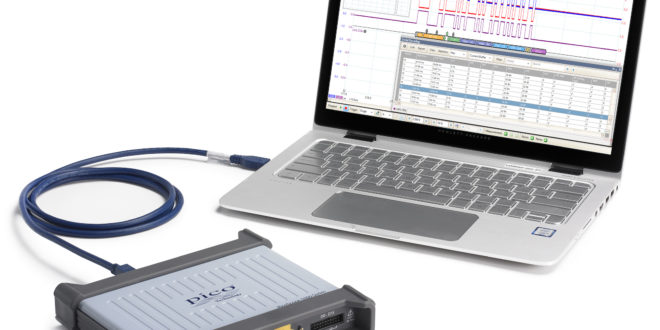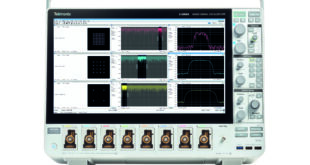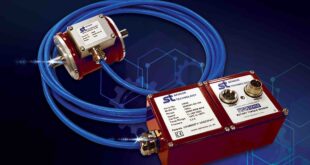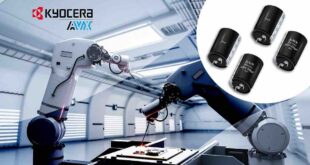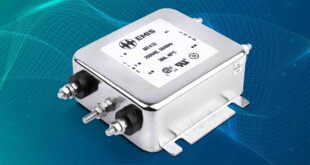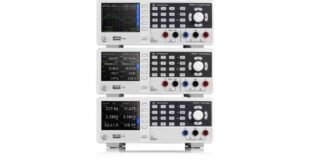The highly flexible PicoScope 5000D series of PC-based oscilloscopes and mixed-signal oscilloscopes (MSOs) offers leading performance with up to 16-bit vertical resolution, up to 200MHz bandwidth and 1GS/s sampling speed.
Offering two- and four-channel models in the range, the devices are designed to be connected to PCs, and integrate the high-speed USB 3.0 connection to allow waveform data to be saved quickly.
The company’s FlexRes flexible-resolution technology enables users to reconfigure the product’s hardware to be either a fast oscilloscope for digital signals or a high-resolution device for audio work and other analogue applications.
The products use multiple high-resolution ADCs at the inputs in different time-interleaved and parallel combinations to set the sampling rate up to a maximum 1GS/s at 8-bit resolution or down to 62.5MS/s at 16-bit resolution.
The MSO models in the range add up to 16 digital channels and the ability to time-correlate analogue and digital channels with high accuracy. These channels can be grouped and displayed as a bus with each value displayed in binary, hex, decimal or level.
In addition, advanced triggers can also be set across both analogue and digital channels.
A further key feature of the 5000D series is deep capture memory, which delivers up to 512 Msamples and enables the capture of long-duration waveforms at maximum sampling speed.
The company’s integrated DeepMeasure tool analyses every cycle in each triggered waveform acquisition and displays the results in a table.
The latest tool version includes 12 parameters per cycle and can display up to a million cycles.
The series also delivers wide support for a wide range of protocols including CAN, FlexRay, I2C, I2S, SPI, Ethernet, USB, MODBUS and DMX512 for various applications in the automotive, embedded, industrial and lighting market sectors.
The PicoSDK software development kit also allows users to write their own applications and supports continuous streaming to a host computer at up to 125MS/s.
RS Components agreement with Zerynth strengthens partnership strategy and bolsters DesignSpark IoT capabilities
RS Components (RS) has signed a partnership agreement with Zerynth, an start-up company that develops ‘middleware’ software for Internet of Things (IoT) projects and applications.
The key essence of the agreement is that the Zerynth IoT development environment will be available via a unique portal on the DesignSpark engineering community, enabling easy access for customers to download the tools.
Zerynth has developed a powerful suite of software tools that enables the programming of 32-bit microcontrollers and their connection to leading cloud infrastructures, enabling the fast deployment of IoT-enabled technology.
The suite is a free and cross-platform integrated development environment that runs on Windows, Linux and Mac OS X based computers.
The toolkit includes a compiler, debugger and an advanced code editor, as well as providing tutorials and example projects, and allows engineers and developers to use either the Python programming language or a hybrid version of C/Python.
Engineers can start to program after installing Zerynth VMs (Virtual Machines) on one of the many supported microcontrollers from leading manufacturers including Espressif, Nordic Semiconductor, NXP, Microchip/Atmel and STMicroelectronics, and connect them to leading cloud services from Amazon, Google, IBM or Microsoft.
The DesignSpark Zerynth Studio suite is available to download from the DesignSpark community website, which offers a suite of free software tools and a host of resources and information to help engineers develop their electronics projects and quickly take them from concept to the creation of prototype devices.
“Our mission is to help speed up projects and development for the IoT by reducing complexity and removing the barriers to entry for engineers,” said Gabriele Montelisciani, CEO at Zerynth. “This concept is a perfect fit with RS’ DesignSpark commitment to the maker and engineering communities, so we are delighted to sign up a leading player in the industry and thereby maximise the exposure of Zerynth and our innovative IoT programming technologies.”
“This agreement represents a pivotal step in the evolution of our partnership model and the augmentation of RS’ strategy for the IoT,” said Richard Curtin, Vice President of Strategic Alliances at RS. “It is the first global IoT-based SaaS* commercial agreement for RS and Electrocomponents plc and is a supreme example of our commitment to innovation and to bringing world-class products, technologies and solutions to our customers. The Zerynth suite is fast becoming the ‘Android’ for embedded IoT applications and is a key addition to the DesignSpark suite of enabling design and development tools for engineers.”
RS Components offers widest XP Power product range
RS Components has introduced the XP Power QSB Seriesof DC-DC converters, giving RS the broadest range of power supplies from XP Power on the market. Designed for applications including signal processing, telecoms, networking and industrial systems, the new QSB Series delivers a stabilised output at a range of standard voltages between 3.3 V and 48 V, at power levels of 75 W to 600 W.
The QSB Series accepts a wide range of input voltages, typically provided from a battery. Input ranges for most models are 2:1 or 4:1, including 18–36 or 9–36 VDC (24 V nominal) and 36–75 or 18–75 VDC (48 V nominal).
However, the 150 W QSB15048W models offer a wider 8:1 input range, accepting anything from 9 V to 75 V.
Power conversion efficiency is high: typically between 86% and 93% depending on model.
High power densities of up to 123.0 W/in3 are achieved. Modules can be connected in parallel for higher power requirements.
All QSB Series power converters provide 1500 VDC isolation, with isolation resistance of 107 Ω or 109 Ω and isolation capacitance ranging from 100 pF to 4000 pF.
All provide remote on/off functions, and all except QSB15048W models include remote sense, compensating up to 10% of nominal output voltage.
QSB converters are available in baseplate cooled packages with industry standard footprints — including ½ brick and full brick formats. They can operate over a wide temperature range from –40°C to +100°C. Over-voltage, over-current and over-temperature protection are provided.
Each unit carries a three-year warranty.
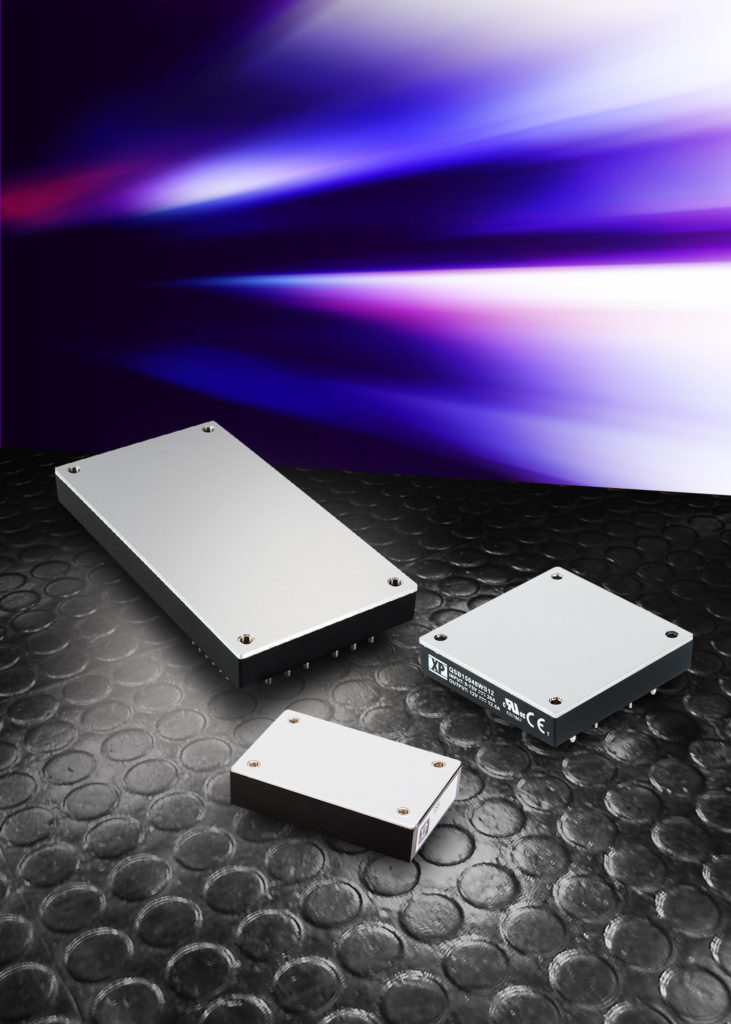
 Engineer News Network The ultimate online news and information resource for today’s engineer
Engineer News Network The ultimate online news and information resource for today’s engineer
